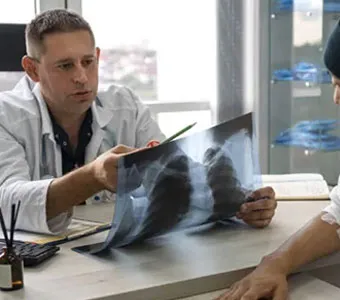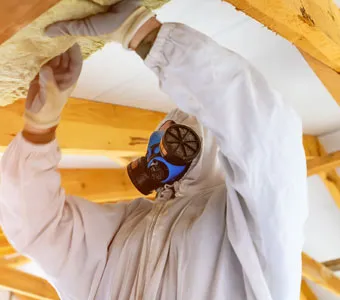What Materials in Engineered Stone Cause Silicosis?
Engineered stone, commonly used in countertops and other surfaces, is a popular choice due to its durability and aesthetic appeal. However, workers who cut, polish, or grind engineered stone are at risk of inhaling harmful crystalline silica dust, which can lead to serious health conditions such as silicosis. What materials in engineered stone cause silicosis?
The primary contributor is the high levels of crystalline silica, particularly in quartz, a key component in many engineered stone products. This dust can cause irreversible lung damage, making it essential to understand the materials involved and take necessary precautions in work environments.
Crystalline Silica in Engineered Stone and Its Link to Silicosis
Engineered stone, often used for countertops, contains high levels of crystalline silica, which is a primary concern for workers in the stone fabrication industry. Crystalline silica is a mineral found in materials like granite, quartz, and engineered stone.
The dust produced when cutting, grinding, or polishing engineered stone releases fine silica particles into the air, which, when inhaled, can damage the lungs over time. Prolonged exposure to these airborne particles increases the risk of developing silicosis, a progressive and potentially fatal lung disease.
Silicosis is caused by the body’s immune response to the silica particles, leading to inflammation and scarring in the lungs. The risk is particularly high for workers in industries like stone cutting, countertop fabrication, and those handling engineered stone products in confined spaces without adequate ventilation. Understanding this risk is crucial in mitigating the dangers associated with working in environments where crystalline silica exposure is prevalent.
Health Risks Associated with Crystalline Silica Exposure in the Stone Industry
Workers exposed to crystalline silica in the stone industry are at an increased risk of developing severe respiratory conditions, including silicosis, lung cancer, and chronic obstructive pulmonary disease (COPD).
Silicosis occurs when silica dust is inhaled over a prolonged period, causing the lungs to become scarred and less efficient in oxygen exchange. This leads to shortness of breath, fatigue, and even respiratory failure in extreme cases.
In addition to silicosis, there is a well-established link between long-term silica exposure and an elevated risk of lung cancer. The inhalation of fine silica particles has been classified as a human carcinogen by international health organizations.
Workers who experience silicosis are also at greater risk for contracting other pulmonary infections, such as tuberculosis, due to the damage to their lung tissue. The harmful effects of silica exposure can be significantly reduced by implementing safety measures, like wet-cutting methods, adequate ventilation systems, and proper personal protective equipment.
Long-Term Effects of Silicosis in Workers
The long-term effects of silicosis can be debilitating, and the disease typically progresses even after exposure to silica has ended. As silicosis develops, the lungs become progressively scarred, making it harder for the body to absorb oxygen.
Symptoms initially appear as mild shortness of breath and coughing, but they can worsen over time, leading to more severe respiratory difficulties. In advanced stages of silicosis, individuals may experience chronic fatigue, chest pain, and an increased risk of lung infections. In the most severe cases, the disease can lead to total respiratory failure and death.
Workers with silicosis are also at a higher risk of developing other lung conditions, such as pulmonary hypertension, heart failure, and cancer. Due to the nature of the disease, it is often diagnosed many years after the initial exposure, making early detection and prevention even more critical. Addressing silica exposure before it leads to silicosis is crucial in preventing long-term health issues.
FAQs
Q: Does Engineered Stone Cause Silicosis?
A: Yes, engineered stone can cause silicosis due to its high levels of crystalline silica. Silica dust is released when cutting, grinding, or polishing engineered stone which contains more than 90% silica.
Prolonged exposure to this dust can lead to silicosis, a serious and often fatal lung disease. Workers in industries like stone fabrication and countertop installation are particularly at risk. Employers must take steps to reduce exposure and provide proper safety equipment to protect workers from these harmful effects.
Q: What Materials Cause Silicosis?
A: Silicosis is caused by inhaling fine particles of crystalline silica, which is found in a range of materials, including granite, quartz, sandstone, and certain engineered stones used for countertops.
Activities such as cutting, grinding, and polishing these materials generate respirable silica dust, which, when inhaled over time, leads to the development of silicosis. Other industries, such as sandblasting and mining, also pose risks due to the presence of silica in the dust generated during these activities.
Q: Which Material Has the Highest Silica Content?
A: Engineered stone, which is used for making countertops, has one of the highest silica contents among commonly used materials. It often contains over 90% silica, making it particularly hazardous for workers who are exposed to the dust during cutting, polishing, or grinding. Other materials with high silica content include granite and quartz, which are also widely used in construction and stonework.
Q: What Are the Hazards of Engineered Stone?
A: The primary hazard of engineered stone is the high levels of crystalline silica, which can cause silicosis, a chronic and irreversible lung disease. When workers are exposed to silica dust during the cutting, grinding, or polishing of engineered stone countertops, they are at risk of developing this debilitating condition. The dust can lead to severe lung damage, respiratory failure, and even death.
Schedule Your Silicosis Consultation
If you or a loved one has been affected by silicosis due to exposure to crystalline silica, you need to understand your rights and the legal options available. Silicosis is a serious condition that can lead to long-term health issues, and seeking legal counsel can help you secure compensation for medical expenses, lost wages, and other damages.
Lawyers can assist in gathering evidence, filing claims, and negotiating settlements to ensure you receive the compensation you deserve. The experienced team at Wallace & Graham is dedicated to helping victims of silicosis navigate their legal options. Schedule a consultation today to discuss your case and learn more about how we can help you on your journey toward justice.






